How diversification enterprises can offer route to succession
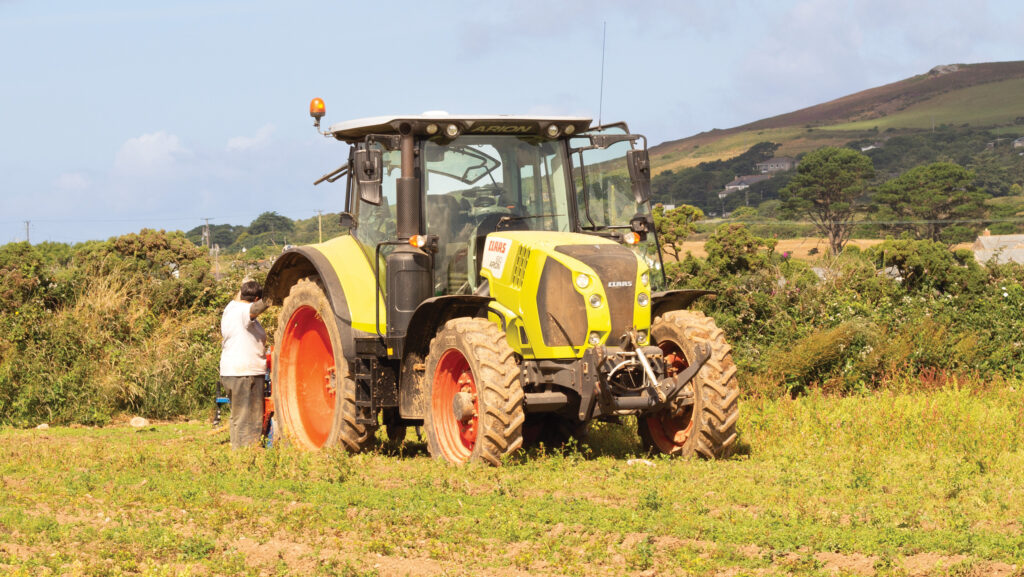 ©The Grower
©The Grower The range of enterprises on the Williams family’s 81ha farm on the outskirts of the Cornish village of St Agnes demonstrates their entrepreneurial approach, incorporating a willingness to take calculated risks.
A bare root tree nursery, a dog exercise field, solar arrays, a caravan and camping site, pick-your-own (PYO) sunflowers and pumpkins and heritage pigs generate an income alongside the principle cereal and vegetable production enterprises.
See also: More diversification case studies and advice
For Mark Williams, who farms with his brother Andrew at Presingoll Farm, the tree enterprise has allowed his daughter Inez Williams-King and her husband Chris to create their own role and income source on the farm.
Inez is the fifth generation of the Williams family on the farm, where diversification plays a key role in business resilience.
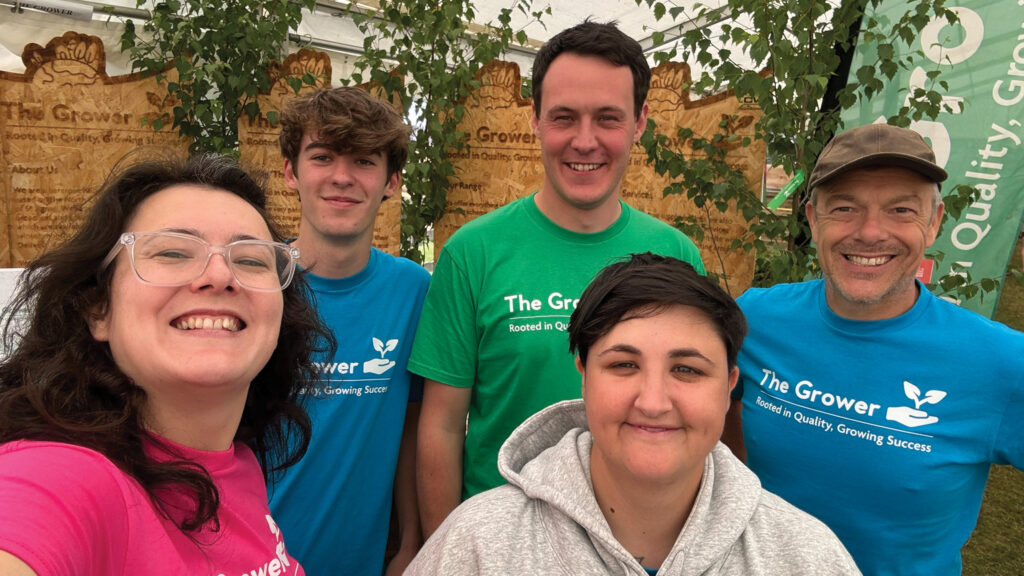
Grower team © The Grower
Farm facts: Presingoll Farm
- 10ha in tree development, 18ha in grassland, 8ha barley and 44.5ha brassicas
- Bareroot tree nursery
- Dog exercise field
- Solar arrays
- Caravan and camp site
- PYO sunflowers and pumpkins
- A small number of South Devon cattle and Tamworth pigs
50 years of alternative ventures
The 100-pitch caravan and camping site was the first divergence from the core farming activities, established 50 years ago by Mark and Andrew’s parents.
However, a decision in 2020 to change direction from rearing beef cattle to growing arable and brassica crops was the catalyst for the other enterprises.
“We have always been quite entrepreneurial, but that was the big change,” Mark recalls.
“We looked at the trends in the market locally and we looked at our future in terms of what our children and the next generation were thinking.
“At that time investment was needed in the infrastructure, so we decided to review what we did in the farmyard and make it efficient and fit for the future.”
The first of the new wave of enterprises – a dog exercise field – quickly followed.
“The Basic Payment Scheme (BPS) was starting to reduce and we had to replace that with something,” says Mark.
The timing of its launch – during the pandemic years when enclosed fields became a refuge for people who wanted to exercise their dogs – gave it a head start on others.
However, being one of the first in the country had its challenges too.
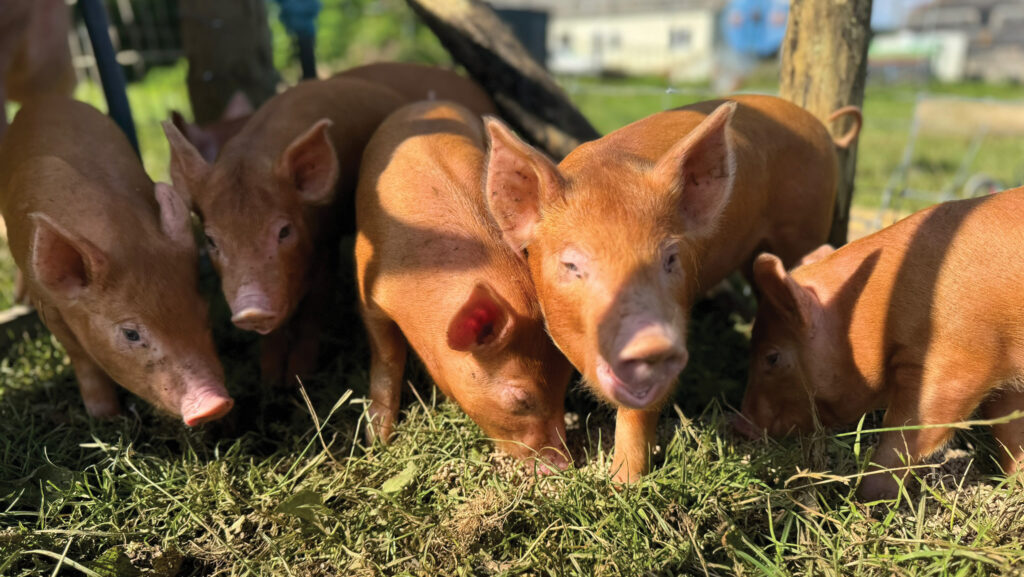
© The Grower
Long planning process
“The planning officers didn’t really understand what it was about, why it was needed and the implications. It took us 18 months to get planning permission,” says Mark.
“It would probably be easier now because there are more of them and a better knowledge among the powers that be of what they entail.”
The farming business, which is structured as a partnership, MAS & A Williams, spent about £20,000 on setup costs.
The enterprise has been so successful that it returned the initial investment by the end of 2023.
Bare root tree nursery
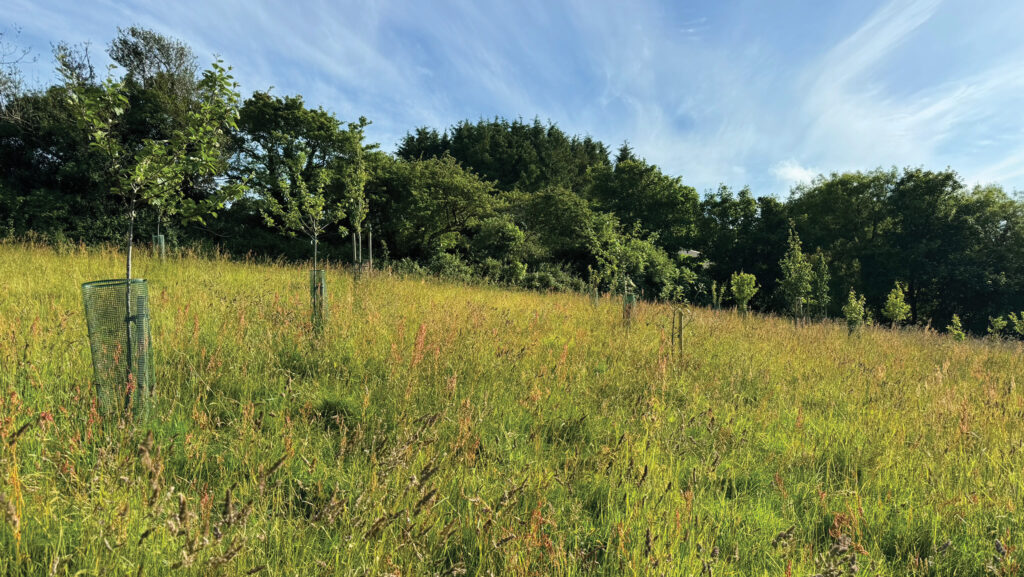
© The Grower
Following shortly afterwards, the bare root tree business was established on the farm in 2021 by Inez and Chris, who previously were living in Gloucestershire.
Inez’s background is in rural land management, including tree planting schemes, and Chris was working as an assistant production manager with a major tree nursery.
Inez was keen to return to her farming roots, but couldn’t see a way of achieving that.
Growing bare-rooted broad-leaf and conifer trees on the farm provided that new entrant opportunity.
“We could see lots of potential from the increasing environmental agenda, and slowly formed the idea that we wanted to grow trees to supply these schemes, and that we could do it really well,” says Inez.
Their business, The Grower, is a separate entity from the farming partnership, paying a notional rent for the land in tree production, equipment and for the use of the farmyard, but there are overlaps too.
Many of the 2m saplings grown annually are beech, and these are grown as a joint enterprise with MAS & A Williams through a share farming agreement because they are cultivated as part of the farm’s crop rotation.
“These trees can go to forestry in their first and second year, but if they don’t, they can supply the amenity market which gives them a multi-year value – but that also needs to be worked into the rotation,” Inez explains.
Some of the species grown are in the ground for less than a year, with the seed sown in March and the saplings lifted in November.
That land is then planted with a cover crop, such as phacelia or a clover-based mix, followed by brassicas and cereals before returning to trees.
Initially, The Grower hired the farm’s tractors, which the farming partnership upgraded to self-drive tractors to make both the farming and tree production more efficient.
“As our business has grown, we have been able to capitalise on the funds we have available and are starting to pay the farm back,” says Inez.
“Without the support of previous generations we wouldn’t have been able to even start the business because it is so capital heavy.
“Their knowledge was important too – I am building on what they have taught me, and my dad and uncle are building on what my grandad, Roger, taught them.”
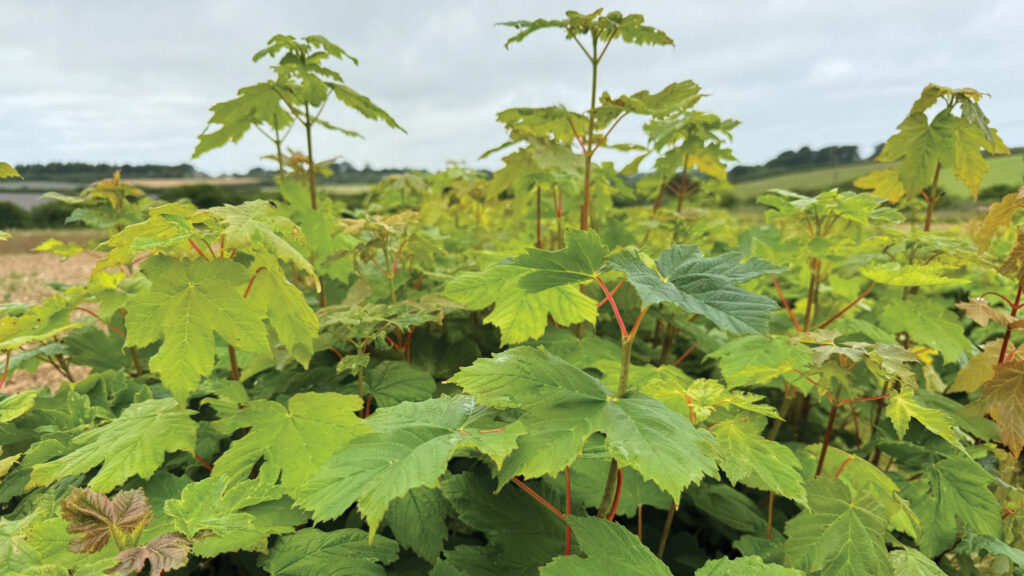
© The Grower
Busy winter season
Inez and Chris employ five full-time staff during the winter months, the busiest part of the year, including, in a supervisor’s role, Andrew’s son Jack, adding another element to the succession story.
The ambition is to eventually be growing up to 5m trees a year.
As well as selling these in bundles, The Grower also provides planting and maintenance services to local authorities, charities, the forestry sector and farm businesses across Devon and Cornwall.
The land type is Grade 3, with coarse, loamy soils, but years of organic farming and, more recently, regenerative practices have improved those soils and made them more productive and resilient to drought and flooding.
“The assumption should be that you shouldn’t be able to grow the things that we grow, but how we farm, regeneratively, counters that, increasing soil organic matter towards an average of 14%,” says Mark.
“We have taken quite a few hectares out of production for agroforestry, 10m field margins, thickening hedgerows, but production has increased so much that it has compensated.
“My father would have been yielding a tonne of barley to the acre but we are getting three, not massive compared to arable land, but it is good for ours.”
Solar energy production, in partnership with West Country Renewables, is another income source, with field mounted panels generating 326kW of energy.
Three quarters of that energy is sold to a neighbouring business, Jay’s Gates at Great Western Railway yard, and the rest to the grid.
When the rotation allows, small acreages of sunflowers and pumpkins are grown for PYO.
“We might have a field spare after the trees and plant crops that help with public access and engagement,” says Mark.
“Our major philosophy around the succession agenda is to improve public understanding of farm businesses, to educate people about what they should expect in a rural location, and how they can help.
“We have had community tree-planting days that have been really well attended, and lots of farm walks too.”
A Tamworth boar and four sows, which are run on the more marginal land, generate an income from direct sales to local restaurants, and numbers will grow if demand increases.
The scale of the business and the need to support multiple families – Mark and Andrew’s brother and sister are silent partners – requires another form of diversification too in the form of off-farm jobs.
Mark, who has worked in a skills advisory role, believes this gives the family a useful perspective.
“We have a broad church of roles – it has enabled us to look at our context and how our farm could contribute to the local economy and community, but also for it to continue as a viable entity in its own right.”
In 2023, the Williams won the Cornwall Sustainability Growing Greener award in recognition of their work.
For the family, protecting the land, equipping the next generation with opportunities to flourish and running a viable business is more than the here and now.
It’s about ensuring that the farm continues to exist in 100 years’ time.
Their advice to other farming businesses is to apply that test too – to question if everything is being done to secure that position.
Mark and Inez’s diversification and succession tips
- Take an overview of the farm, continuously test ideas and use generational knowledge
- Capitalise on grants – the tree business has received funding from Defra’s Farming Innovation and Equipment fund, the Forestry Commission’s Tree Production Capital grant, and Forest for Cornwall Plan health fund. “Without these we wouldn’t have grown to the scale we have,” says Inez, who established the bare root tree nursery
- Invest in technology – self-drive tractors and GPS systems have facilitated higher and more efficient tree production
- Engage with the public – for example, there are signs on some field gates advising people of biosecurity risks, plant health status and why a field should not be entered
- Run community engagement days. “By opening up the farm, we don’t have to be the social media keyboard warriors on fly-tipping or dog mess, because the locals who come to our community days, do it for us,” says Inez.
Succession enterprise structure
- Succession enterprise rents land from the core farm
- Also grows beech tree saplings in main farm rotation and in share farming agreement with main farm business
- Business has developed to provide planting and maintenance services to local authorities, charities, forestry sector and farming customers across two counties
- Initially hired tractors from main farm, limiting capital cost of new enterprise
- Community aspect is important here and for main farm business – tree planting days and other activities help spread wider farming and environment message.
